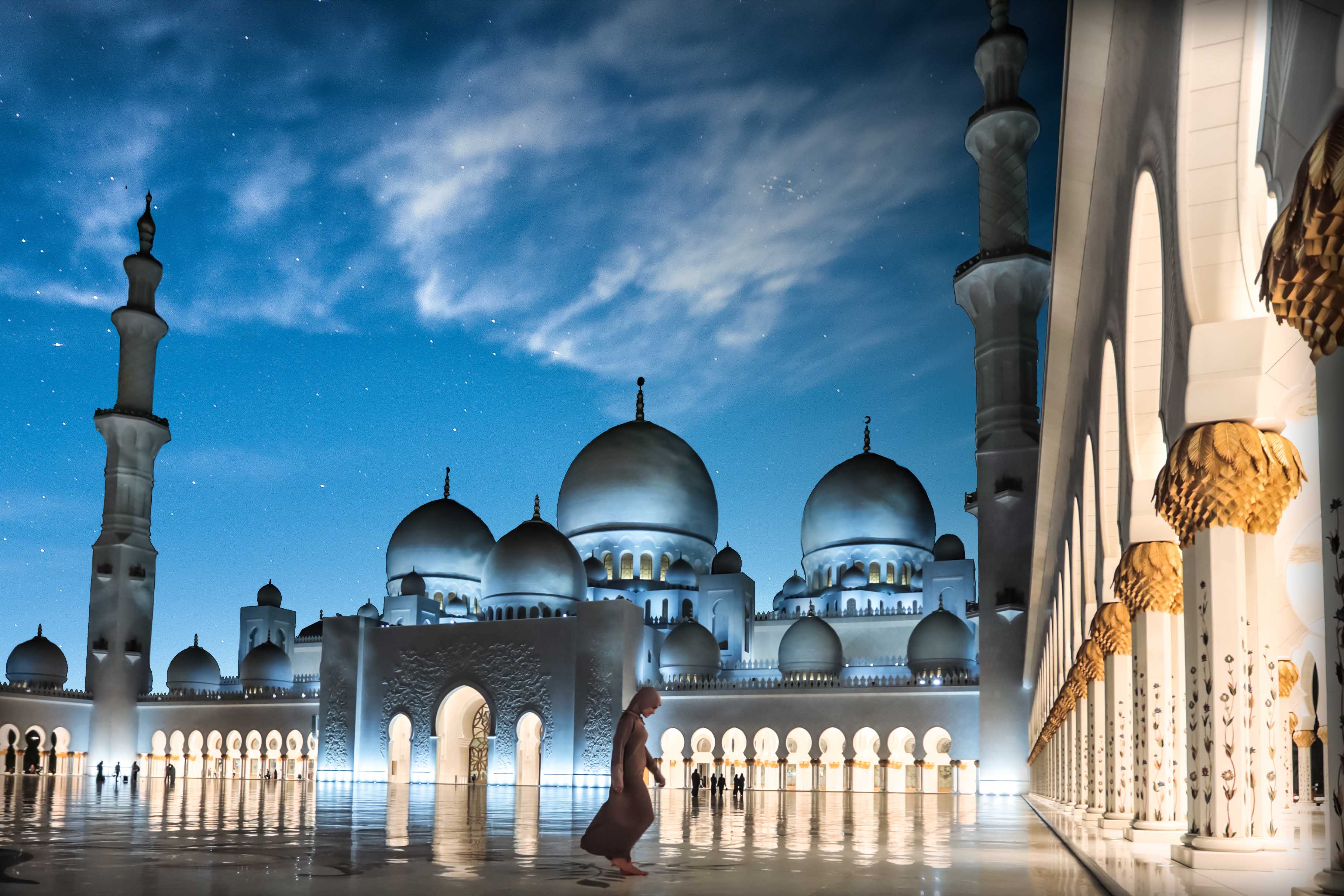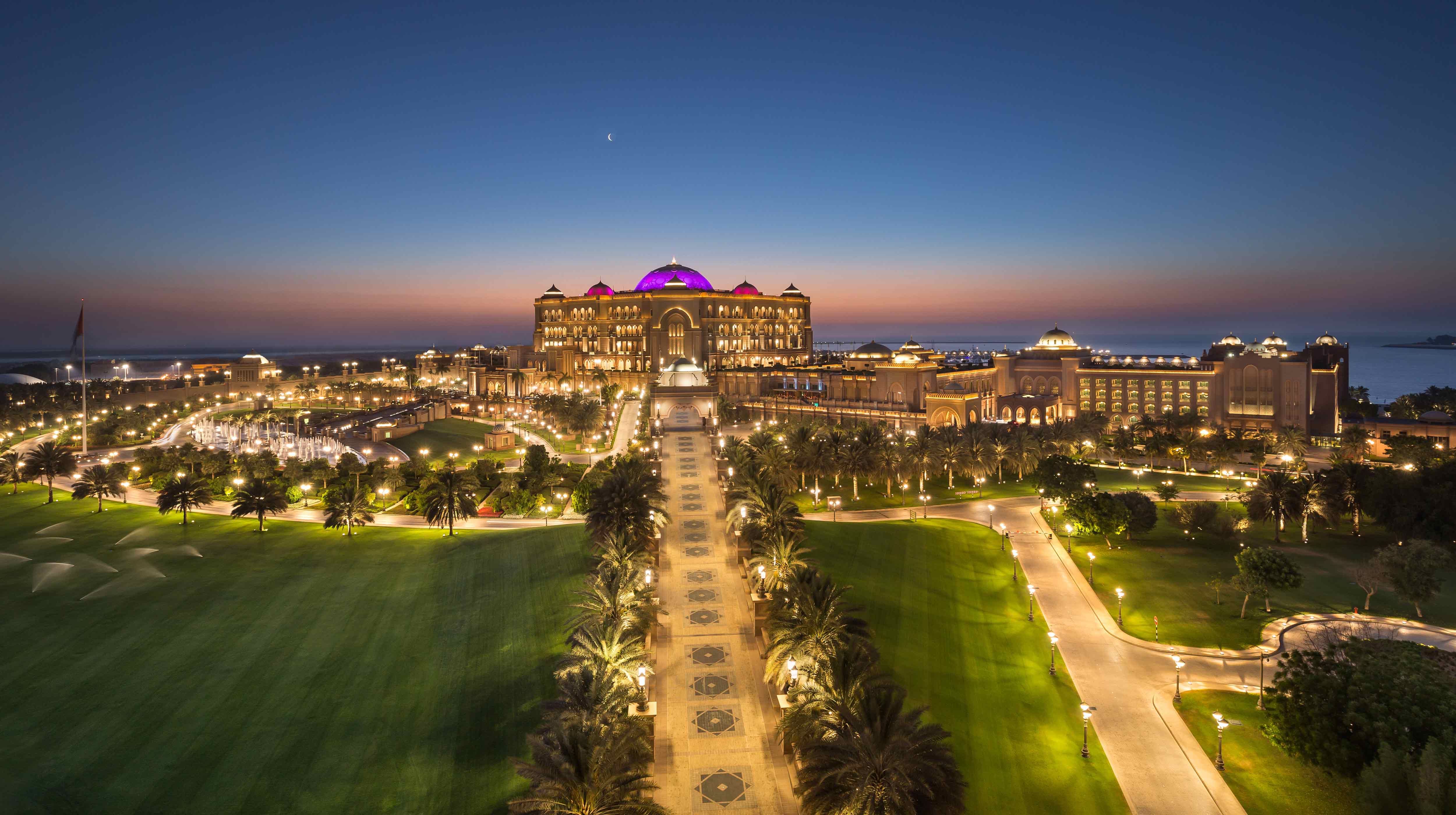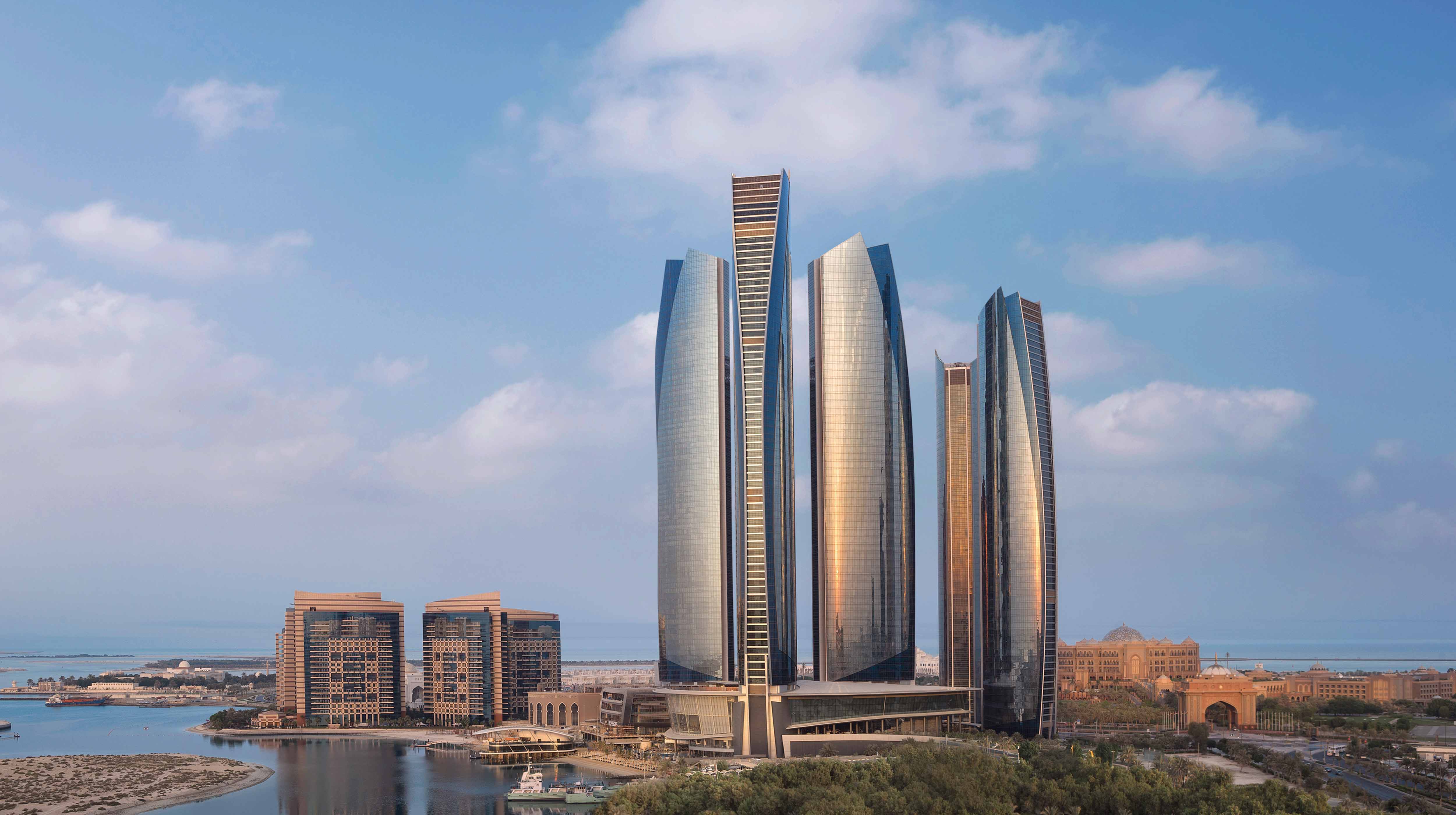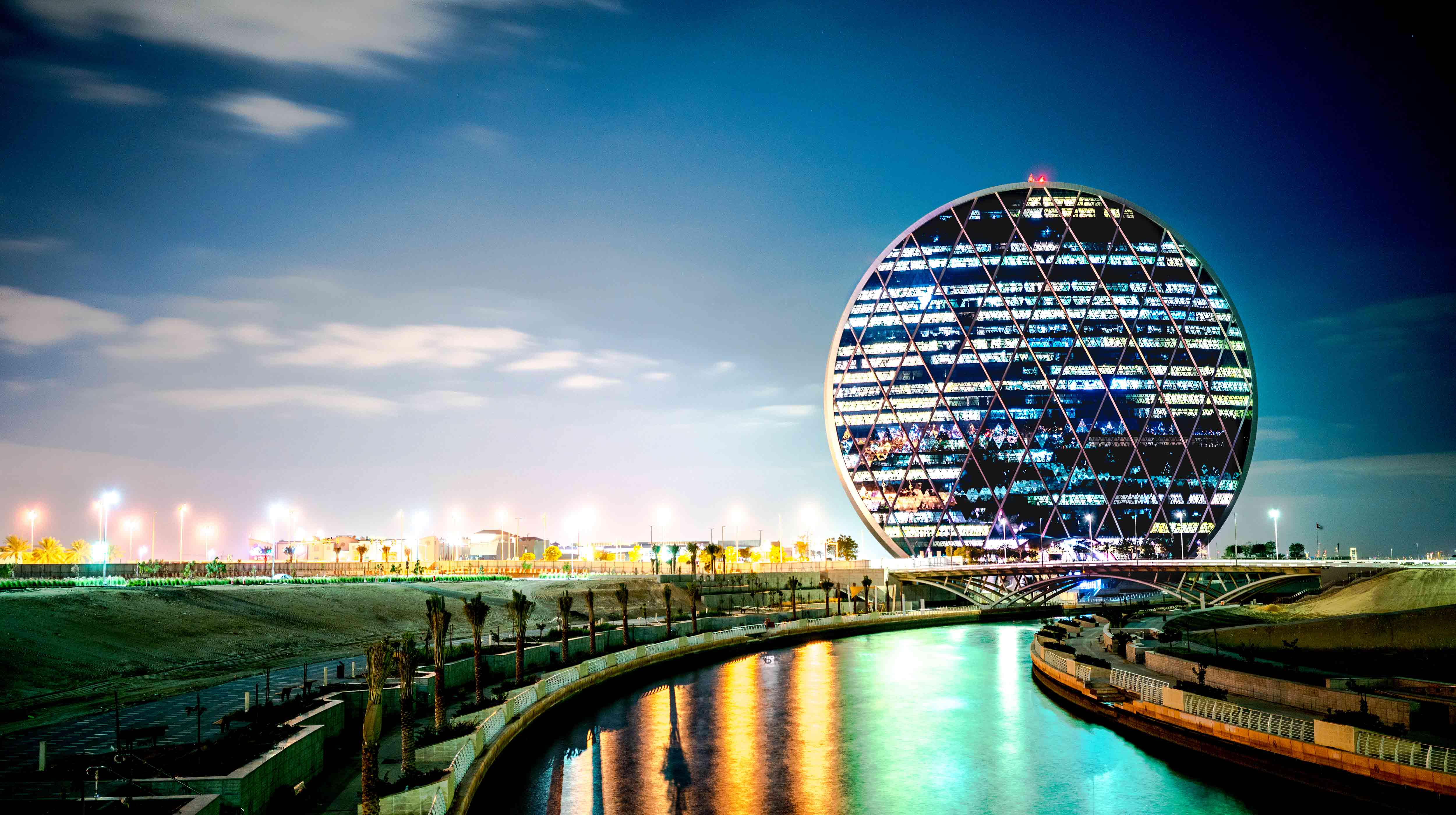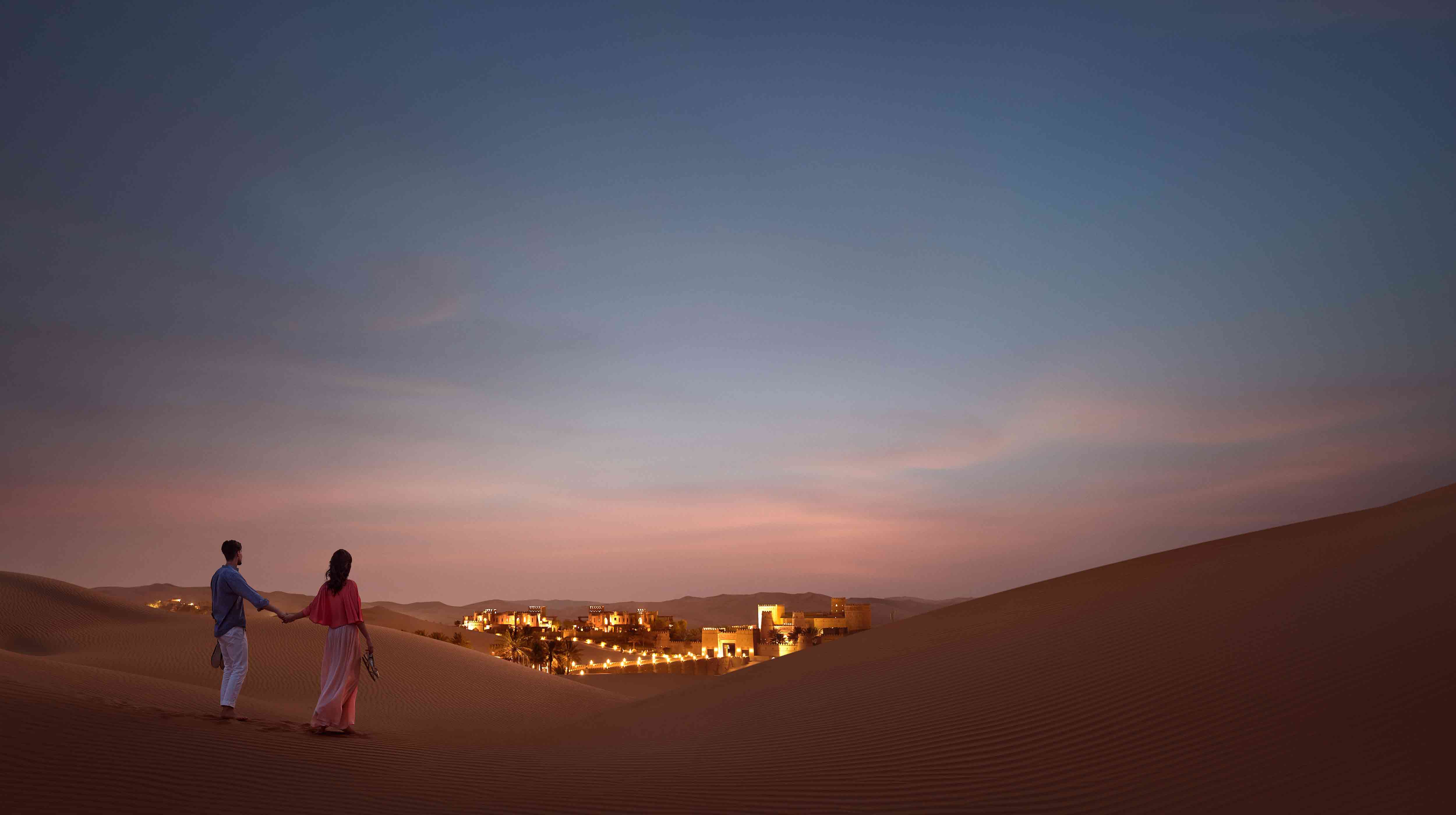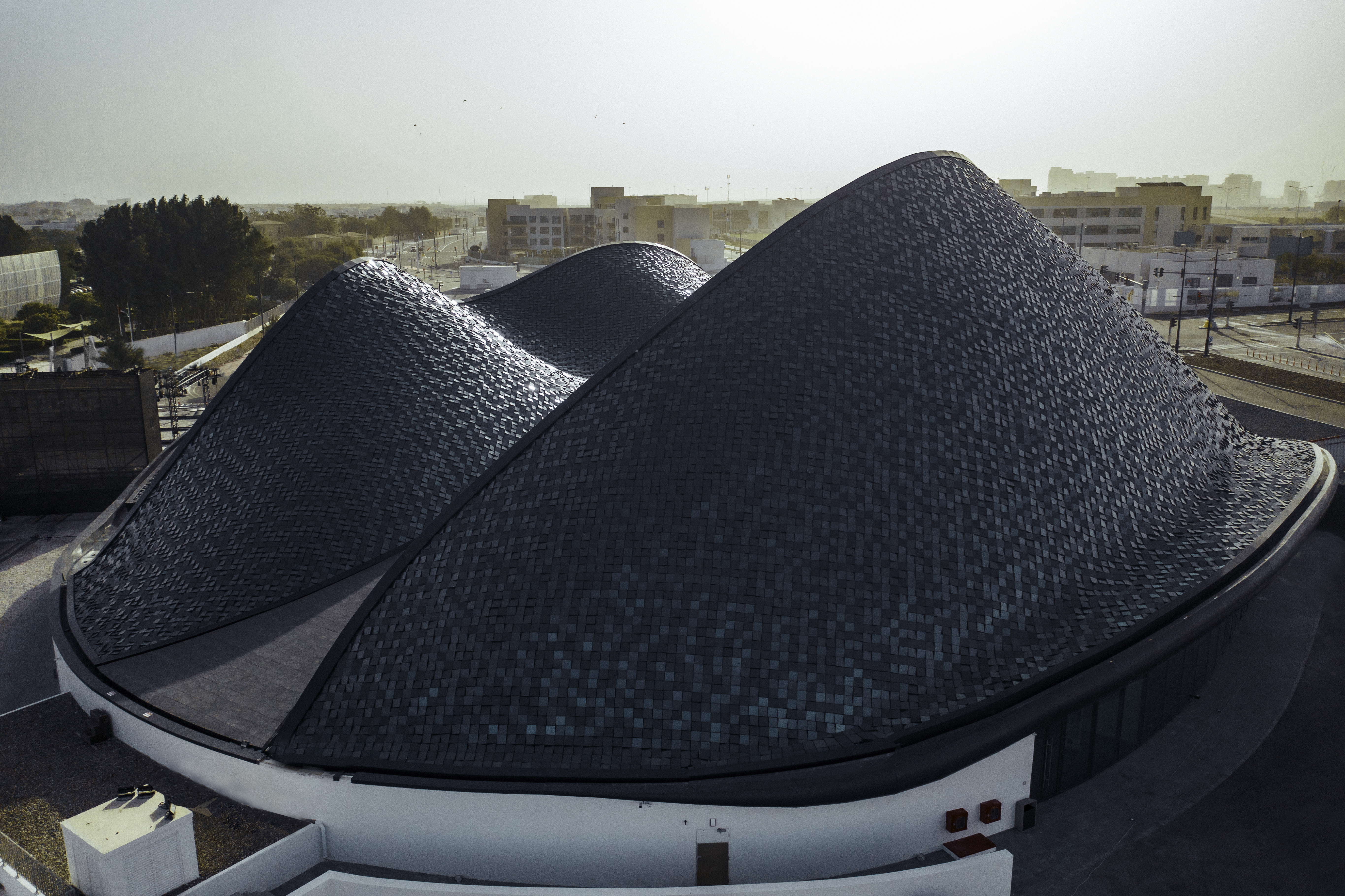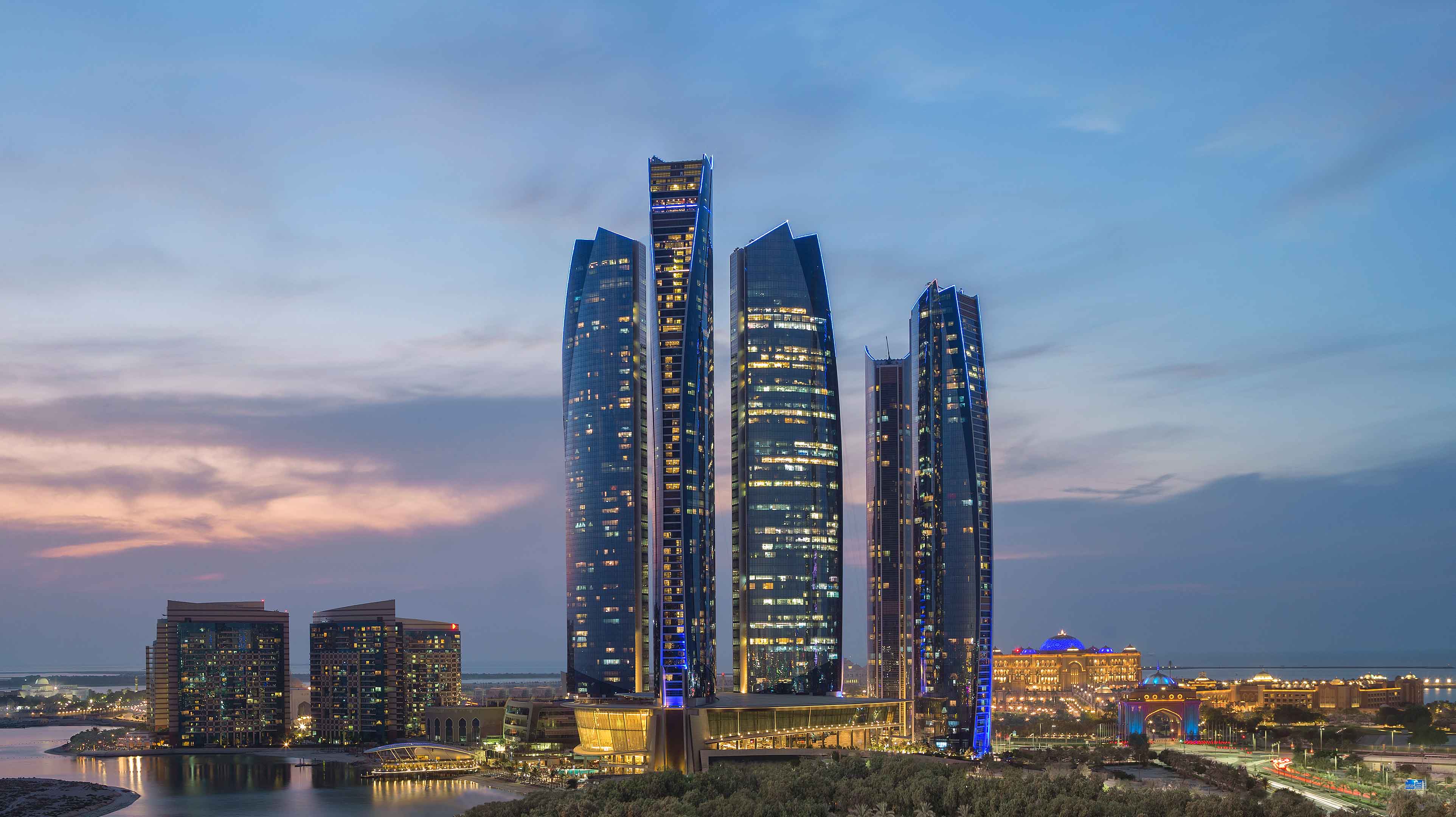
See All
13 must-see architectural masterpieces in Abu Dhabi
In Abu Dhabi, modern architecture meets captivating heritage. As you explore the emirate, whether on a curated tour or at your own pace, you'll encounter structures that stand out not just for their beauty, but for their stories. Ready to explore these Abu Dhabi buildings - here are 13 must-see architectural masterpieces in Abu Dhabi.
1. Louvre Abu Dhabi
Drawing inspiration from the traditional Arabic dome, Jean Nouvel, the Pritzker Prize-winning architect, designed Louvre Abu Dhabi. This groundbreaking institution, the first universal museum in the Arab world, seamlessly blends heritage with modern innovation. The showpiece of the museum is the iconic 180-metre, eight-layer star-latticed dome, which allows sunlight to filter through and cast an intriguing "rain of light" pattern on the walls and floors. The museum is open from 10am to midnight. It’s closed on Monday.
Tickets: AED 63
2. Capital Gate
A silver slant of curved steel and glittering glass slicing Abu Dhabi's horizon, this magnificent skyscraper is perfect photograph fodder - and high on the list of luxury destinations. An architectural and engineering feat, Capital Gate (also known as the Leaning Tower of Abu Dhabi) leans 18 degrees west and stands 160 metres (524.9 feet) tall. In 2010 it was certified as the World's Furthest Manmade Leaning Building by the Guinness World Records.
Tip: Stay at Andaz Capital Gate Hotel for incredible views of the city from the outdoor pool deck.
3. Sheikh Zayed Bridge
The 843-metre-long Sheikh Zayed Bridge is a prominent Abu Dhabi landmark, connecting Abu Dhabi to the mainland. It was designed by the late British Iraqi architect, Zaha Hadid, the first female architect to receive the Pritzker Architecture Prize in 2014. The steel arches with a suspended deck were built to mimic the sweeping curves of sand dunes and the waves of the Gulf that roared below.
4. Sheikh Zayed Grand Mosque
The Sheikh Zayed Grand Mosque is one of the largest mosques in the world and the largest in Abu Dhabi. The exterior and interior architecture of Abu Dhabi’s iconic mosque is a global artistic collaboration. It features 82 Moroccan-designed white marble domes, the world's largest hand-knotted carpet, gold-plated Swarovski chandeliers, and a courtyard featuring one of the world's largest marble mosaic artworks by Italian artisans. A guided tour is recommended to learn more about the mosque.
Tip: Just like the Sheikh Zayed Bridge, on every new moon, the mosque is lit up in deep blue.
5. Etihad Towers
Etihad Towers is one of the finest architectural examples in Abu Dhabi’s striking modern skyline. Towering at the end of Abu Dhabi's Corniche, the five-structure complex is a one-stop live, work, stay, shop and dine destination, and boasts stunning views of the city and the Arabian Gulf.
Tip: Head to the Observation Deck at 300 (on Tower 2's 74th floor) for the best view of the city.
6. Emirates Palace Mandarin Oriental
Emirates Palace, one of Abu Dhabi’s most renowned landmarks, was designed to reflect Arabian tradition. The main palace building stretches over a kilometre from wing to wing, with its manicured gardens spanning an impressive 100 hectares. Its interiors are adorned with 1,002 chandeliers, 394 rooms, suites and Royal Suites decorated with mother-of-pearl and crystals, 114 luminous domes and more.
7. Qasr Al Hosn
Step back in time by visiting Abu Dhabi City's most important historical landmark, Qasr Al Hosn. A fort incorporating the area's oldest standing structure, a watchtower built in the 1760s, it was also home to the royal family at one point! The recently restored Qasr Al Hosn, with its two iconic buildings - the Inner Fort (first constructed in 1795) and the Outer Palace (1939-1945) – tells the story of this fascinating city’s history and development. Check out our Tour Abu Dhabi's Architecture guide.
Fun fact: Qasr Al Hosn was known as ‘The White Fort’, as the fort’s walls sparkled in the sunlight and served as a navigational point for ships.
8. Qasr Al Watan
Discover the rich legacy of the UAE at the exquisite Qasr Al Watan, a working presidential palace and cultural landmark built from white granite and limestone. Honouring traditional Arabian heritage and artistry, the 'Palace of the Nation' houses impressive exhibits and iconic rooms with over 5,000 geometric mosaic walls and floor patterns. In The Great Hall, you'll find one of the largest domes in the world and a reflective installation by Emirati artist Mattar bin Lahej. Visit between 11 am to 6:45 pm.
Tickets: AED 65
9. Al Bahr Towers
Adults and kids alike will marvel at the intriguing design of the Al Bahr Towers. Architects Abdulmajid Karanouh and Aedas Architects leaned heavily on nature and culture for their inspiration. The result is this 29-storey, circular twin tower structure, boasting mashrabiya-style facades. The honeycomb-like panels contract and expand in response to the sun's trajectory and are controlled by an advanced programming system.
Fun fact: The building’s natural sunscreen filters out more than 50% of the sunlight, reducing the need for energy-draining air conditioning.
Pushing the limits
10. Aldar HQ
Arabia's first circular building is awe-inspiring and unique. MZ Architects' founder Marwan Zgheib used the clamshell as his overarching inspiration, an homage to Abu Dhabi's seafaring heritage. Towering 100m high, two giant circular convex-shaped glass walls are joined by a narrow strip of glazing. Its circular shape symbolises unity, stability and rationality.
11. Qasr Al Sarab Desert Resort by Anantara
Just 200km outside the city is the Empty Quarter (or Rub al Khali), the world's largest uninterrupted sand mass, framed by towering dunes. As you can imagine, building anything in this sandy landscape is a feat, which is why the luxurious Qasr Al Sarab Desert Resort by Anantara is worth the stay.
12. Berklee College of Music
The former Norman Foster-designed UAE pavilion, with its instantly recognisable, undulating dune shape, has been recently renovated to house the Berklee Abu Dhabi campus. This gorgeous landmark offers 3,900 square metres of performance space, recording studios, rehearsal studios, practice rooms, ensemble rooms and more.
13. W Abu Dhabi
The W Abu Dhabi on Yas Island, Abu Dhabi is an architectural marvel with a unique and captivating design. The 217-metre Grid Shell facade is a sweeping expanse of glass and steel adorned with 5,389 illuminated panels. The colour and brightness of each glass panel change 20 times per second creating a unique display of light and shadow. The hotel, designed by Hani Rashid and Lise Anne Couture comprises two 12-story towers connected by a monocoque steel and glass bridge and Grid Shell structure that arches over the Yas Marina Circuit F1 track.
